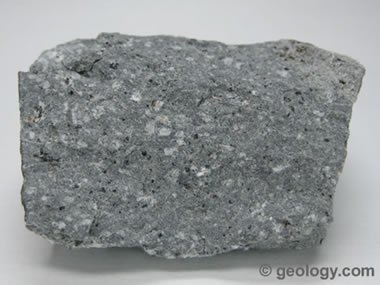
Andesite is a fine-grained, extrusive igneous rock composed mainly of plagioclase with other minerals such as hornblende, pyroxene and biotite. The specimen shown is about two inches (five centimeters) across.
Basalt
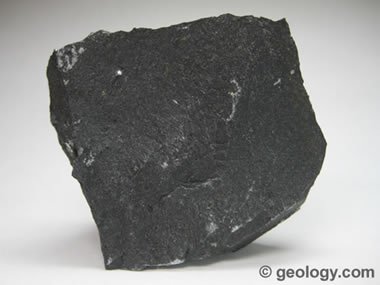
Basalt is a fine-grained, dark-colored extrusive igneous rock composed mainly of plagioclase and pyroxene. The specimen shown is about two inches (five centimeters) across.
Gabro
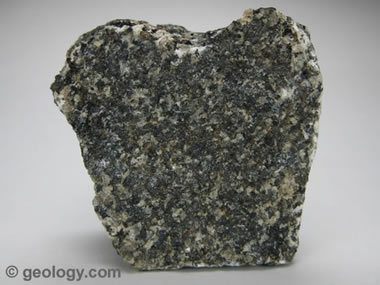
Gabbro is a coarse-grained, dark colored, intrusive igneous rock that contains feldspar, augite and sometimes olivine. The specimen shown above is about two inches (five centimeters) across.
Granite
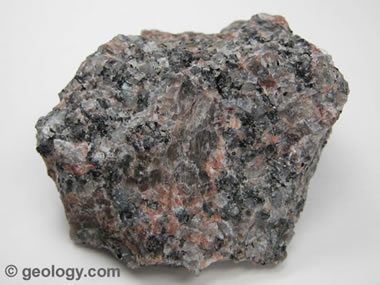
Granite is a coarse-grained, light colored, intrusive igneous rock that contains mainly quartz and feldspar minerals. The specimen above is about two inches (five centimeters) across.
Diorite
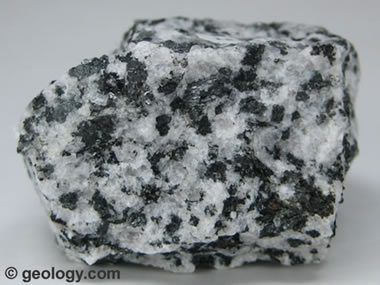
Diorite is a coarse-grained, intrusive igneous rock that contains a mixture of feldspar, pyroxene, hornblende and sometimes quartz. The specimen shown above is about two inches (five centimeters) across.
Obsidian
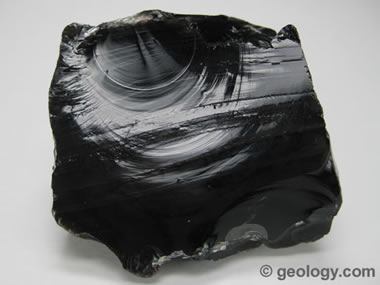
Obsidian is a dark-colored volcanic glass that forms from the very rapid cooling of molten rock material. It cools so rapidly that crystals do not form. The specimen shown above is about two inches (five centimeters) across.
Pegmatite
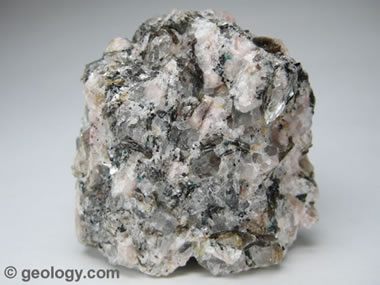
Pegmatite is a light-colored, extremely coarse-grained intrusive igneous rock. It forms near the margins of a magma chamber during the final phases of magma chamber crystallization. It often contains rare minerals that are not found in other parts of the magma chamber. The specimen shown above is about two inches (five centimeters) across.
Peridotite
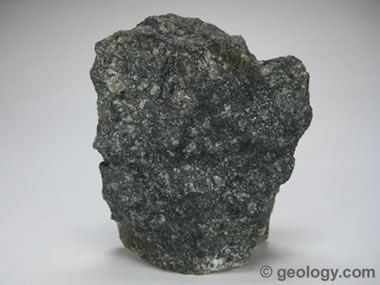
Peridotite is a coarse-grained intrusive igneous rock that is composed almost entirely of olivine. It may contain small amounts of amphibole, feldspar, quartz or pyroxene. The specimen shown above is about two inches (five centimeters) across
Pumice
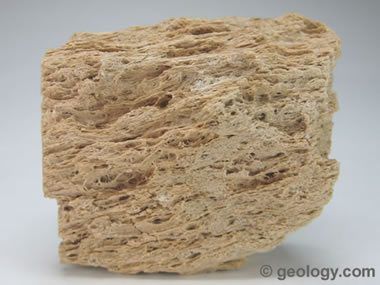
Pumice is a light-colored vesicular igneous rock. It forms through very rapid solidification of a melt. The vesicular texture is a result of gas trapped in the melt at the time of solidification. The specimen shown above is about two inches (five centimeters) across.
Ryolite
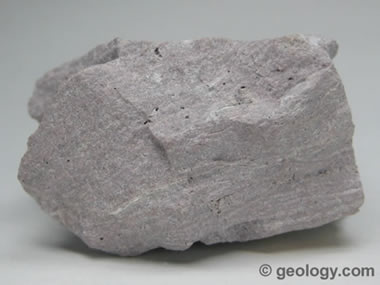
Rhyolite is a light-colored, fine-grained, extrusive igneous rock that typically contains quartz and feldspar minerals. The specimen shown above is about two inches (five centimeters) across.
Scoria
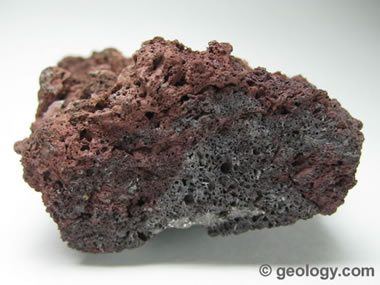
Scoria is a dark-colored, vesicular, extrusive igneous rock. The vesicles are a result of trapped gas within the melt at the time of solidification. It often forms as a frothy crust on the top of a lava flow or as material ejected from a volcanic vent and solidifying while airborne. The specimen shown above is about two inches (five centimeters) across
Tuff
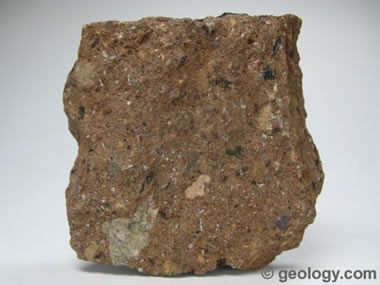 Welded Tuff is a rock that is composed of materials that were ejected from a volcano, fell to Earth, and then lithified into a rock. It is usually composed mainly of volcanic ash and sometimes contains larger size particles such as cinders. The specimen shown above is about two inches (five centimeters) across.
Welded Tuff is a rock that is composed of materials that were ejected from a volcano, fell to Earth, and then lithified into a rock. It is usually composed mainly of volcanic ash and sometimes contains larger size particles such as cinders. The specimen shown above is about two inches (five centimeters) across.
No comments:
Post a Comment